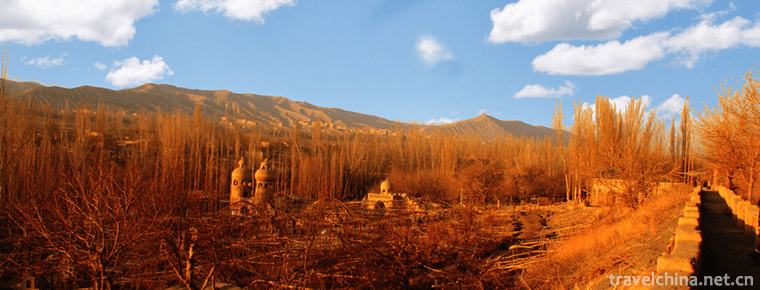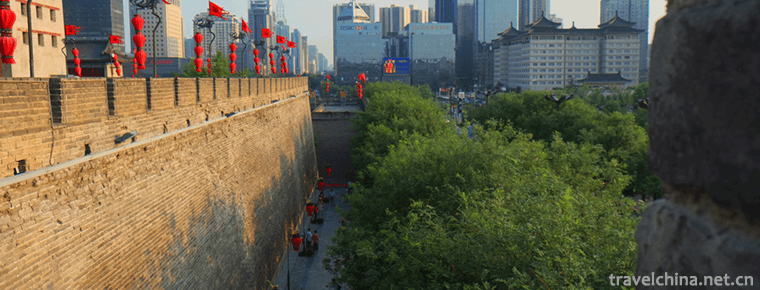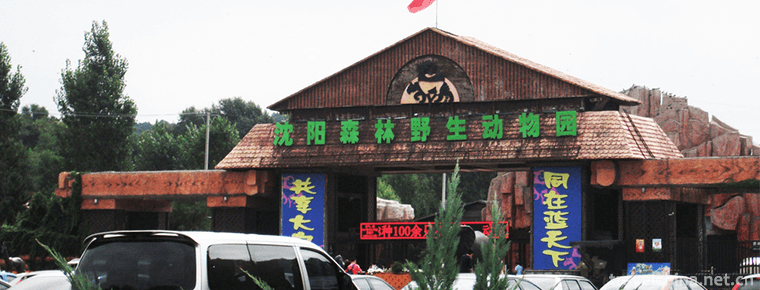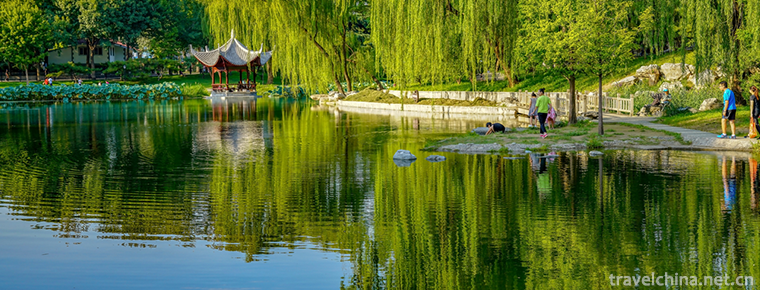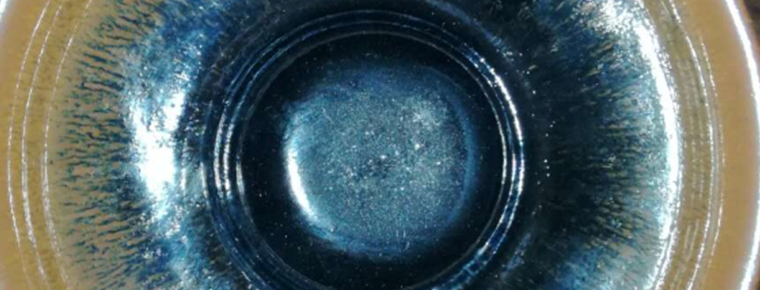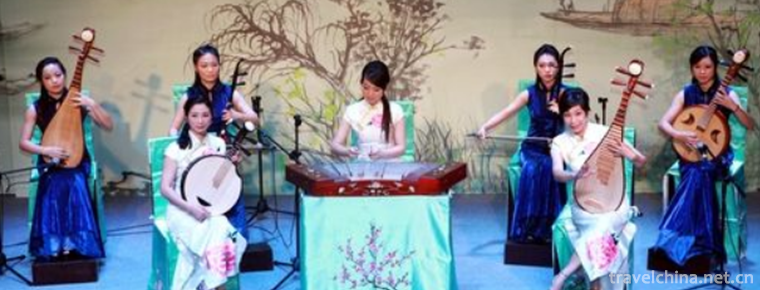Miao New Year
Miao New Year
Miao year, the first year of the Miao calendar, is the most solemn traditional festival of the Miao people. The time spent in different areas varies from September to the first month of the lunar calendar.
It usually lasts three, five or fifteen days. Some are held on the first day of the Chinese lunar calendar in November, and some are held on the first day (rabbit day) or ugly day (September) in September, October and December. The Miao people in Rongshui County celebrate the New Year's Eve on November 30 of the lunar calendar and the following day. This Miao has the largest population and the widest area.
Years ago, every household had to prepare a plentiful annual food. Besides killing pigs and sheep (cattle), they also had to prepare enough glutinous rice wine. New Year's meals are plentiful, stressing "all seven colors" and "all five flavors", and banqueting each other with the best glutinous rice "Nianbao" to present gifts.
On June 7, 2008, Miaonian was approved by the State Council to be included in the second batch of national intangible cultural heritage list.
Origin of festivals
Since ancient times, the Miao people in this area have used a different calendar from the Han people's "lunar calendar" - the Miao calendar. The first year of the Miao calendar is the year of the Miao calendar. During the "Miaonian" period, there is a habit of negotiating in order. Time is in October and November of the lunar calendar. This habit also makes these different Miao villages turn into Carnival centers in the Miao region on their different "Miao Year" days.
Festival activities
"Miao Year" is also a day for Miao people to celebrate the harvest, the end of the year's work and the beginning of joy. Every seedling year, people's favorite Lusheng and bronze drums can be moved out to enjoy themselves. From this day on, the Miao people began to walk around villages. You welcome me. The Lusheng festivals in villages and villages continued to be happy until the "Drum Turning Festival" in February in spring.
The main activities of "Miaonian" include killing pigs, beating glutinous rice balls, offering sacrifices to ancestors, eating "Luan New Year's dinner", "string wine" and dancing Lusheng. Bullfighting, bird fighting and song racing are also held in some areas.
Customs everywhere
Miao's folk activities are very rich, mainly sacrificing ancestors, blowing Lusheng and trampling halls, walking stockades and knotting in the same year. Lusheng stamping hall was held in Lusheng Hall of Benzhai, where both men and women participated. Firstly, a short Sheng song was blown out by Xiao Lusheng's hand. Then the big and small Sheng hands played together. The girls wore bird clothes, silver jewelry, silver crowns dancing, the crisp sound of silver wear and Sheng song, interwoven into a festival moving melody.
The same year is also an important folk activity during the Miao Dynasty. Every seedling year. Zhaizhai and Zhaizhai are guest hosts and tie each other in the same year. Dozens of men and women or hundreds of people in the village, with Lusheng, put on festival dress, beat gongs and drums to the village in the same year for a party. Before entering the village, the owner was informed by three songs, and the owner led the men and women out of the village to welcome them. Then the Lusheng Hall played Lusheng and trampling on the hall again as the village entry ceremony, and the host also returned the ceremony by blowing Lusheng and trampling on the hall. At the end of the ceremony, guests are invited to all the houses for entertainment. Guests usually stay for three days. During the day, they play Lusheng competitions and perform Miao Opera in the evening. During this period, unmarried young men and women carry out social activities of "sitting sister" to sing songs to pursue their beloved and stay up all night.
During the Miao Year, in addition to the above activities, the Miao people also held bullfighting, horse fighting, bird fighting, shooting, pole climbing and other traditional sports competitions. Among them, bullfighting and horse fighting are the most attractive, often attracting thousands of people to watch.
Guizhou Province
Qingshui River and Duliujiang River Basin
The Miao Year is the most important festival of the Miao people in Qingshui River and Duliujiang River valleys. Since ancient times, the Miao people in this area have used a different calendar from the Han people's "lunar calendar" - the Miao calendar. The first year of the Miao calendar is the year of the Miao calendar.
During the "Miaonian" period, there is a habit of negotiating in order. Time is in October and November of the lunar calendar. This habit also makes these different Miao villages turn into Carnival centers in the Miao region on their different "Miao Year" days.
"Miaonian" is a day for the Miao family to celebrate the harvest, the end of the year's work and the beginning of joy. By the year of the seedling, Lusheng and Drum can be moved out and danced heartily. From that day on, the Miao people began to hold Lusheng festivals and festivals from village to village. You welcome me to the village and enjoy the Drum Turning Festival until February in spring.
The main activities of "Miaonian" include killing pigs, beating glutinous rice balls, offering sacrifices to ancestors, eating "Luan New Year's dinner", "string wine" and dancing Lusheng. Bullfighting, bird fighting and song racing are also held in some areas.
Danzhai and its surrounding counties and cities
In Danzhai and the surrounding counties and cities, the main customs of the Miao Year are found.
There are four sub-clans of "Ga Nao" branch, namely "You" branch (mainly living in northern Danzhai, southern Kaili and Eastern Majiang), "Gong" branch (mainly living in the territory of Danzhai, southern Kaili and parts of Jianhe, Taijiang, Huangping and Majiang), white-collar Miao branch (mainly living in southern Danzhai and Northern Sandu) and Qingjiang Miao branch (mainly living in Leishan). The West and the east of Danzhai.
Corresponding to the above areas, in Danzhai County, "Miaonian" mainly spreads in the northern, northeastern Nangao and Xingren Miaozhai villages, as well as in the southeastern Paitiao, Yangwu and Yahui villages. There are mainly Miao inhabited areas such as Leishan County and Kaili City in Qiandongnan Prefecture.
Because Miao and Yao are of the same origin, the Miao and Yao areas in northern Guangxi also celebrate the Miao Year. There, Miaonian, also known as "Danu Festival", "Zuniang Festival", "29th Festival" and "Zhuzhu Festival", is a traditional festival of the Bunuyao people in Duan, Bama, Dahua, Mashan, Pingguo, Longan and other places. There are many legends about the origin of Miaonian. One is to commemorate the birthday of the first grandmother Milotta, the other is to commemorate the achievements of Yao King Lanlu in shooting down the surplus sun and saving the Yao people, and the third is to commemorate the anniversary of Kahen, the national hero who died for introducing cereals.
Nandan County
The Miao people of Zhongbao in Nandan County are on June 30. On the eve of the Spring Festival, families clean courtyards, houses, sew new clothes and add new daily necessities. Households generally kill chickens, ducks, buy meat, brew wine and make glutinous rice steamed bread. On New Year's Eve, family members should be reunited. At night, they should keep watch for the New Year's Eve. When chickens crow, firecrackers or powder guns will be fired to announce the New Year's Day. One of the important activities of the Miaonian Year is "eating in the same year". "Eating in the same year" is the communicative custom between people or stockaded villages during the Miao Dynasty. After the founding of New China, the common custom of "eating in the same year" among stockaded villages has been gradually reformed, and some friendly visits and healthy recreational activities have been preserved. During the festival, the larger Miao villages organized Lusheng team to carry out Lusheng activities. Sometimes, traditional sports competitions such as bullfighting, horse fighting, cock fighting, bird fighting, shooting and pole climbing are also held.
Miaonian is a traditional festival of Miao nationality. It is popular in Kaili, Majiang, Leishan, Danzhai, Huangping County and Damiaoshan of Guangxi Zhuang Autonomous Prefecture in southeastern Guizhou Province. Every year, the Mao (rabbit) and Ugly (ox) days are held in September, October or November of the lunar calendar. The Festival lasts three days. In addition to preparing the rich non-staple food such as sweet wine, Baba and flour, the farmers should also kill chickens and slaughtered pigs, worship ancestors, open "wealth gate" and honor "God of the year". The festival starts early to sound and firecrackers, and the mountain area uses more shotguns to open three rings in Xiamen. Festival activities include Lusheng Dance, Stadium Dance, New Year Dance, Moon Dance, Bullfighting, Horse Racing, Flower Mountain Stepping, etc.
Lei Shan County
Miaonian is the most solemn and important festival for Miao compatriots. Miao people believe that there are only two seasons in a year: hot and cold. The alternating October of the lunar calendar is the end of the hot season, the beginning of the cold season, the end of the old year and the beginning of the new year. In Leishan County, Guizhou Province, where the Miao population accounts for 83.6%, there are the most grand and grand celebrations of the Miao Year.
Hunan Province
On December 22, 2014, Hunan Province held the Miao Year 2014 in Shanjiang Town, Fenghuang County. More than 40 people participated in the activities, including Hunan Miao Society, Xiangxi Prefecture People's Committee, Shaoyang People's Committee, Jishou University, Chengbu County Miao Society, Jingzhou Miao and Dong Autonomous County Miao Society and Mayang Miao Autonomous County Miao Society.
Since 2012, Hunan Miao Society has defined the winter solstice as the seedling year. Miaonian is the most solemn and important festival for Miao compatriots. The Miao people believe that before the festival, the farmers should not only prepare rich food such as sweet wine, Baba, noodles, but also kill chickens, slaughter pigs, worship ancestors, open "wealth gate" and "year God" to carry out rich and colorful Miao folk literature and art activities.
Inheritance and innovation
Today, Miaonian has become a "golden card" in Leishan County, attracting thousands of tourists to experience the colorful Miao culture from the activities of Miaonian.
On this day of Miaonian, many villagers who work outside will come home, dress up in costumes and gather in the daytime, sing and dance, and return home at night to make bamboo buns and have reunion dinner, which is very lively.
Ciba is made by oneself, the fish on the table are fished from one's own paddy field, and the bacon just smoked is cut on it. Ren Yufeng's family entertains city tourists with authentic farm delicacies, coupled with the host's enthusiastic singing and toast, and every visitor's face is slightly drunk after dinner. Ren Yufeng's Dagulu village is a Miao village with a history of over 100 years, only 10 minutes'drive from the county town. With the rise of tourism, more than 10 households of more than 100 villagers in the village have started farmhouse entertainment. "In recent years, there have been a lot of tourists in Miaoye, so my family gathers once a year to receive guests, according to their own way of celebrating the New Year, and we have a lively New Year together."
With the help of the Spring Festival, the villagers welcomed the tourists into their homes, "Look at our national costumes with intangible cultural elements from head to toe, and experience the Miao cultural feast in the Miao residence. The Miao people experience the benefits of tourism in the strong atmosphere of the Miao year, so as to love and protect their national culture more."


-
Portuguesestyle egg tarts
Portuguese egg tart, also known as Portuguese cream tower, caramel Mejit egg tart. Portuguese tart, known in Hong Kong, Macao and Guangdong, is a small cream pastry pie..
Views: 178 Time 2018-10-31 -
Putaogou Scenic Area Turpan City
The Putaogou Scenic Area in Turpan City is located in the Flame Mountain, 11 kilometers northeast of Turpan City, Xinjiang. It is about 8 kilometers long in the South and 2 kilometers wide in the East.
Views: 171 Time 2018-12-12 -
Xian City Wall Scenic Area
Xi'an City Wall Scenic Area and National AAAAA Tourist Scenic Area are the four-in-one Scenic Area around the city with the theme of the ancient city wall of Xi'an, including the moat.
Views: 135 Time 2018-12-12 -
Ancient Huaihe River Cultural Ecological Scenic Area
The ancient Huaihe River cultural and ecological scenic spot is located in Qingjiangpu District, Huai'an City, Jiangsu Province. It is a national AAAA-level tourist scenic spot. The scenic spot is an .
Views: 88 Time 2019-01-12 -
Shenyang Forest Wildlife Park
Shenyang Forest Zoo is a state-level forest wildlife park approved by the State Forestry Administration and the Ministry of Construction. Located in the Chebanshan International Scenic Tourism Develop.
Views: 112 Time 2019-02-08 -
Taoranting Park
Taoranting Park, located on the northwest side of Taoranqiao in the South Second Ring of Beijing, is a new modern urban garden, which integrates ancient and modern gardening arts and focuses on highli.
Views: 130 Time 2019-02-13 -
Burning Technology of Building Kiln and Building Calendula
Kiln building Calendula firing technology, the local traditional skills of Nanping City, Fujian Province, one of the national intangible cultural heritage..
Views: 289 Time 2019-05-05 -
Shaoxing Pinghu Tune
Shaoxing Pinghu Diao, also known as "Yuejun Nanci", or "Shaoxing Pinghu Diao" for short, is a popular form of folk art in Shaoxing and its surrounding areas in Zhejiang Province. I.
Views: 152 Time 2019-06-14 -
Firing Techniques of Zibo Ceramics
During the Wei, Jin, Southern and Northern Dynasties, Zibo began to produce porcelain. During the Tang and Song Dynasties, the technology of making porcelain was constantly improving. During the Ming .
Views: 196 Time 2019-08-16 -
Concept of Cheongsam
Whether "Qipao" refers specifically to the Qipao in the Republic of China or includes the "Qiren's Robe" or "Qinu's Robe" in the Qing Dynasty. The definition of the concept of Qipao is as controversial as the origin style of Qipao..
Views: 313 Time 2020-12-11 -
Nanchong economy
In 2019, Nanchong's GDP will reach 232.222 billion yuan, an increase of 8.0% over that of 2018. Among them, the added value of the primary industry was 40.425 billion yuan, an increase of 2.9% over 2018; the added value of the secondary industry was .
Views: 340 Time 2020-12-17 -
Historical evolution of Meishan
The establishment of Meishan government began in the third year of Jianwu (496) of the Southern Qi Dynasty. Qitongzuo county was built in the south of Wuyang County, Qianwei county. In the ordinary period of Nanliang (520-527), qitongzuo county was renamed as Qitong County, and Qitong county was established with the same county..
Views: 277 Time 2020-12-18

